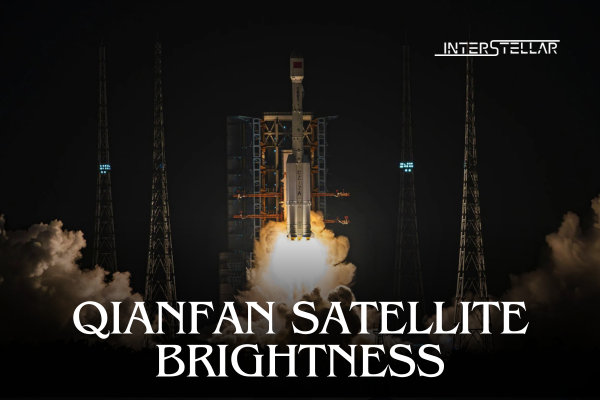Brightness of Chinese Broadband Satellites Raises Concerns Among Astronomers
The first set of Chinese broadband satellites has been observed to be significantly brighter than their Western counterparts, creating a new challenge for astronomers. According to a study posted on the arXiv preprint server on 30 September, these satellites pose a risk of interference with ground-based observatories.
Qianfan Satellite Brightness Exceeds Recommendations
The study focused on 18 Qianfan satellites, also known as “Thousand Sails,” launched in August. These satellites are the initial batch of a planned constellation that may eventually consist of more than 14,000 units. Observations showed that the brightness of these satellites varies from magnitude 8 when low in the sky to magnitude 4 when overhead.
For context, magnitude 6 is the limit of visibility to the unaided eye under dark sky conditions. Therefore, the Qianfan satellites, at higher elevations, are visible to the naked eye. Their brightness also far exceeds the recommended threshold of magnitude 7 for satellite constellations. This threshold aims to minimise interference with astronomical activities.
“Qianfan satellites are brighter than magnitude 6 except when observed at low elevations in the sky,” noted the researchers. As a result, the satellites could disrupt both professional and amateur astronomers unless their design is modified to reduce brightness.
Analysis and Design Concerns
The study also modelled how the satellites’ brightness changes with their elevation in the sky. It found that the satellites’ configuration, featuring a large flat-panel antenna facing Earth and a solar array pointed away, contributes to their brightness. This design appears to lack measures such as light reflectors to mitigate brightness, which SpaceX introduced on its Starlink satellites.
SpaceX modified its Starlink designs after initial observations showed that their Generation 1 satellites were interfering with astronomical research. Later generations now approach the recommended magnitude 7. The astronomers behind the Qianfan study hope that highlighting these findings early will encourage similar design changes for future Qianfan satellites.
Limited Dialogue Between China and International Astronomical Bodies
The International Astronomical Union’s Centre for the Protection of Dark and Quiet Skies from Satellite Constellation Interference (CPS), which conducted the study, aims to raise awareness of the issue. However, it remains unclear if the developers of Qianfan, Shanghai Spacecom Satellite Technology, will address the brightness problem. CPS representatives have reported limited contact with Chinese industry or government officials, primarily through United Nations forums.
Broader Challenges from Satellite Constellations
The Qianfan satellites are not the only recent source of concern. AST SpaceMobile recently deployed a large phased array antenna on one of its BlueBird satellites, which also has potential to interfere with astronomical observations due to its size—65 square meters in area, making it one of the largest antennas in low Earth orbit.
In addition, radio astronomers have encountered interference from SpaceX’s Starlink satellites. A recent study using data from the Low Frequency Array (LOFAR) radio telescope found that unintended emissions from Starlink’s “v2 mini” satellites were much stronger than astronomical signals. These emissions were not linked to the satellites’ broadband services but were likely caused by electronic components.
“Humanity is clearly approaching an inflection point where we need to take action to preserve our sky as a window to explore the universe from Earth,” said Federico Di Vruno, co-director of CPS. He emphasised that minimising unintended radiation should be a priority for satellite operators as part of their sustainable space policies.


